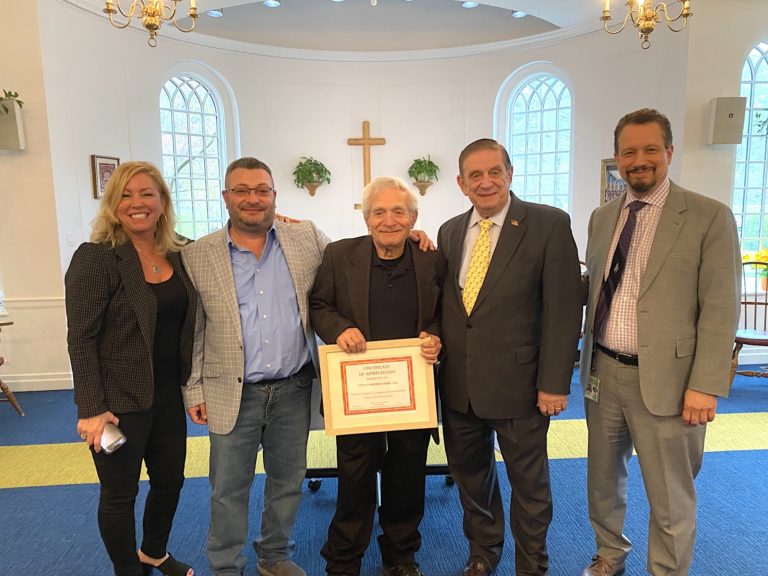By Peter Becker
Many of the most intense conversations among educators and parents today focus on student wellness, and the ever-increasing rates of anxiety, depression, and suicide among adolescents. The devastation wrought in teens, and in the people who care for them, by these and other maladies only seems to be getting worse, while few, if any, solutions seem capable of reversing or stemming the increase.
The fact that schools, parents, professionals, and students have identified all of this as a problem is a good start, and just talking about mental health has become increasingly normal and de-stigmatized. As we refine our approach to medication and counseling and take seriously the relentless impact of screens, we can hope that we’ll learn what works well, and put those strategies into action. But what if the underlying causes of the current crisis run deeper? And what if treating the symptoms, while necessary, won’t address the root causes?
In her prescient 2015 book, The Spiritual Child, Lisa Miller, Ph.D., writes that, “natural spirituality … appears to be the single most significant factor in children’s health and their ability to thrive.” That is a huge claim, one that should cause all of us as educators, parents, coaches, and therapists to pause and reflect. Dr. Miller’s assertions are based more in science than religion, and she isn’t advocating for conversion to a particular faith tradition. A professor of psychology and education, and Director of the Clinical Psychology Program at Columbia University, Teachers College, she has arrived at her profound insights into the underlying sources of the current mental health crisis among teens through rigorous research.
Dr. Miller’s chapters on adolescents, parenting and spirituality are perhaps the most important chapters I have read as an educator (and as a parent) in two decades in independent schools. She writes, “spirituality is the most robust protective factor against the big three dangers of adolescence: depression, anxiety, and risk-taking.” (It’s important to note that Dr. Miller does not think adolescent risk-taking is inherently negative but, rather, differentiates between the risk-taking impulse and negative risk-taking, such as alcohol and drug use, “risky sex,” and aggressive driving.)
If we grant Dr. Miller’s premise, and consider the direction in which American culture has been headed for much of the last 50 years, we need to be prepared to admit that, generally speaking, the culture in which this generation of students has grown up has done very little to encourage, support, or reward anything that points adolescents in the direction of spirituality, or questions about meaning and purpose. Instead, the screens to which our kids (and most of us, if we’re honest) are addicted serve a steady diet of effortless consumerism, mindless and mind-numbing entertainment, and identity politics that masquerade as groundbreaking insight. For many kids, the endless content fed by their devices is a respite from what feels like the rat race of school and extracurriculars, the payoff for which — entrance into an elite college — some teens suspect may activate their parents’ intrinsic motivation more than their own. The messages surrounding our students suggest that the purpose of life is consumption, entertainment, and achievement for the sake of achievement.
A shift in perspective is the first step
All of this begs the question, if the mental health crisis in adolescents is really a spiritual crisis, a crisis of meaning and purpose, what can we do about it? In her book, Dr. Miller suggests that we need to rediscover the “engine” that “drives natural spirituality … first an inborn faculty for transcendent connection, then a developmental impetus to make it our own, and the resulting deep personal relationship with the transcendent through nature, God, or the universal force.”
If you are like me, you might question what this even means, and whether this assertion is offensive, divisive or worse. And if we accept this as a solution, what is the first step that we can take as parents and educators? For many of us, spirituality — meaning seeking — is not a well-developed habit. Our collective spiritual muscles are pretty flabby. For others, spirituality may be familiar, comfortable terrain, while others perceive it as a threat, something to be avoided or viewed with skepticism. Still others may find spirituality irrelevant, or abstract and amorphous. Regardless of our familiarity and practice, we can’t expect our students to learn from deeper sources of wisdom if we don’t go first.
Dr. Miller and other researchers and writers, like Dr. Dacher Keltner, can help make this terrain easier to navigate. Dr. Keltner structures his book, Awe: The New Science of Everyday Wonder and How It Can Transform Your Life, around eight sources that are accessible to all of us, though adopting them may require shifts in our habits or the lenses through which we see and experience the world. His sources are moral beauty, collective effervescence, nature, music, visual design, spirituality and religion, life and death, and epiphanies. Dr. Keltner defines awe as “the feeling of being in the presence of something vast that transcends your current understanding of the world.”
Like Dr. Keltner, Katherine May, the author of Enchantment: Awakening Wonder in an Anxious Age, gives us the perspective to see the transcendent around us all the time. Much of the modern project of the last 500 years has pursued a vision of life intended precisely to erase awe — the goal has been to create a world in which nothing exceeds understanding. In 2023, we — and our children — are too smart and too cool for awe, or wonder, or mystery. This attitude is what’s hurting us. If, as adults, we re-learn this ability to experience and identify sources of awe, meaning, and purpose, we will be in a much better position to teach children to do the same. The first step might be as simple as retuning our antennae and realizing that we are missing out on a lot of the beauty and wonder that’s right in front of us, and right in front of our kids too.
Ask the big questions, and call out wonder and awe
In a remarkable lecture to new teachers, Frederick Gunn, as he neared the end of his life as a pioneering educator, outdoorsman, and abolitionist, said “My friend, if you aspire to teach and train the young, first set your own heart to school.” The adolescents in our care as parents and teachers are asking us desperately to set our own hearts to school on the deepest questions of meaning and purpose. Where does my value and worth come from? What is all of this striving for? The anxiety, depression, and suicide rates among teens and young adults tell us that we can’t wait until after they’ve been admitted to college to get serious about these questions. In fact, the work of Dr. Miller and others who focus on this topic tells us that we should weave the practices of spiritual seeking — asking the big questions, calling out awe, wonder, and mystery — into family and school life from our children’s first years — and never quit. Even if we begin the process late, when our children are well into their teens, and the start may be faltering and awkward, we must persist, for the sake of our kids.
What do school-based solutions look like? They need not be revolutionary, nor particularly religious or spiritual. Solutions are really just orienting the time and attention of students to sources of awe, wonder, and mystery and equipping students with the tools — and perspective — to see, name, and appreciate them.
In the pre-K to eighth grade Montessori school that two of my children attend, this takes the shape of spending a lot of time in the natural environment surrounding the school and learning about the ecosystems around them. When they spend time in nature, learning about the almost-magical relationships between the trees and soil, they are away from screens and learning with all of their senses, rather than one or two. Their school, decidedly secular in orientation, also celebrates many different faith traditions throughout the year, both in the classroom and through music, and orients lessons around big questions about meaning and purpose.
At The Frederick Gunn School, one intervention we’ve implemented is to create moments we call “Hitting Pause” at our three-times-weekly School Meeting. For three to five minutes, a member of our community leads us in a practice that gives students and faculty the time and space to pause and reflect. This practice can take the shape of mindful and intentional breath work, listening to a poem or a piece of student-performed music, or “yoga-in-your-seat.” It can be anything that encourages students and adults to exercise our capacity to pause amidst the busyness of daily school life and perhaps wonder at the impact on us of simply taking a moment. We know that a silver bullet for the current mental health crisis does not exist, and we have a responsibility to intervene and not take the status quo for granted.
Many schools have chaplains or Directors of Spiritual Life — these are roles that schools and parents should prize, celebrate, and bring into the center of planning — not only when a particular religious holiday approaches, but also in conversations about curriculum development, the daily schedule, and co-curriculars. While independent schools have certain advantages in terms of the flexibility to organize school around particular commitments, including religious and spiritual commitments, public schools can (and sometimes do) orient students to sources of awe, wonder, and mystery, and to the big questions of life. One newly-created, Connecticut-based source for parents and educators is the Life Worth Living Initiative at Yale’s Center for Faith and Culture. Their tagline is “Envisioning a world where deep reflection on the good life is central to education and public discourse.” The course, which is available as a curriculum for high schools as well, “equips students, educators, and the public for the lifelong process of discerning, articulating, and pursuing the good life by engaging the world’s philosophical and religious traditions.”
The crisis facing teens and the adults who care for them is real. Hopefully, as parents and teachers, we can exercise the courage and curiosity to consider how reconnecting with diverse, ever-present sources of meaning and purpose can provide us and the young people in our care with answers to the big questions and address the deeper needs at the root of their angst.
Peter Becker is the Head of The Frederick Gunn School, a 9-12 grade boarding school in Washington, Connecticut.




